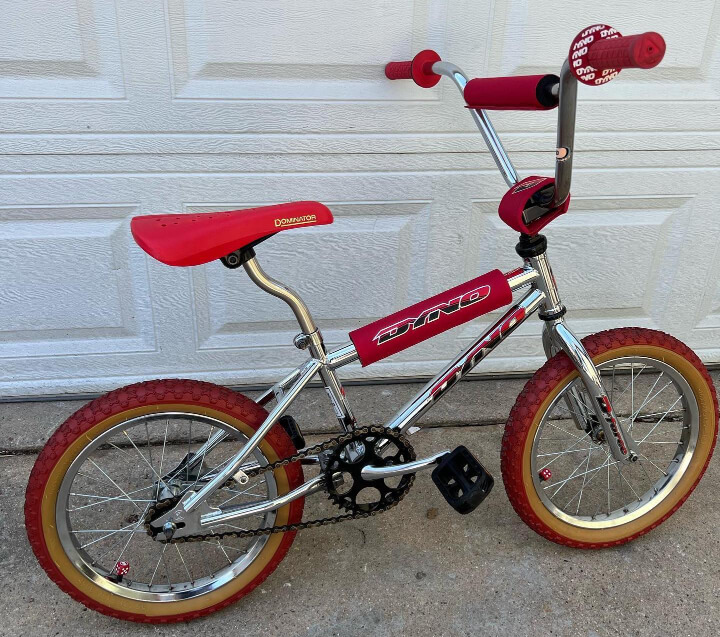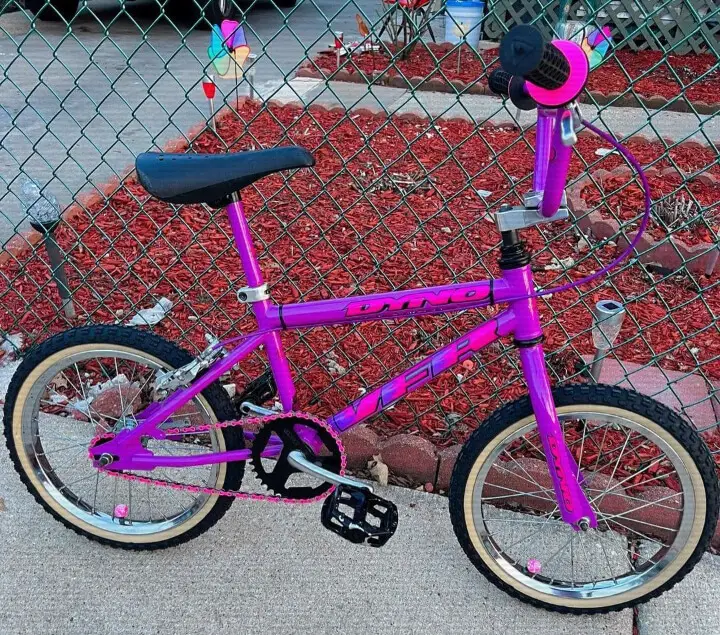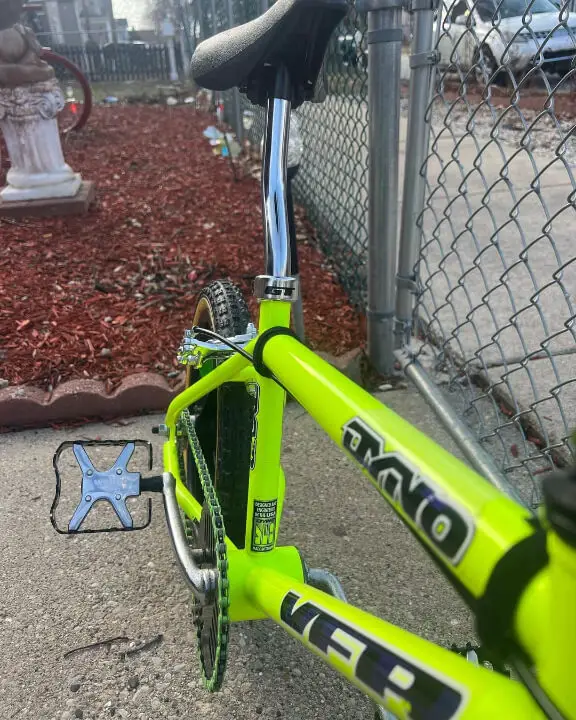
![]() Photo by @oconcleaningservices
Photo by @oconcleaningservices
Review of: Dyno VFR
Uses: Retro BMX Bike
We Like
Impressive Company History
Innovative for the time
Chromoly Frame
We Don't Like
The lack of models after 2001
Check Latest Price
Dyno History and Information

![]() Photo by @oconcleaningservices
Photo by @oconcleaningservices
Unfortunately, Dyno isn’t around anymore. They joined the BMX scene in the early 80s, around the time a lot of bike names and brands popped up during the early expansion of BMX in America.
Bob Morales started Dyno BMX. He started as one of the first professional freestyle BMX riders. He eventually switched to working as a designer, inventor, and entrepreneur in the cycling industry. As well as Dyno, he also launched companies such as the American Freestyle Association (AFA), Auburn Cycles, KORE Bicycle Components, Morales Bicycle Co., Carlsbad Motocross Racing (CMXR), and ASV Inventions.
Back in 1982, the company started out selling BMX racing apparel and number plates. From there they expanded slowly and gained endorsement from several professional riders and companies.
Unfortunately, Dyno was very undercapitalized, resulting in Morales selling to GT Bicycles under a contract to create BMX frames[] and components under the brand.
A few years later Morales and GT signed the up-and-coming star, Dave Mirra. It only took one viewing of the 15-year-old Mirra at the New York King of Vert contest for them to decide to sign him.
Eventually, the Dyno brand name was sold to Pacific Cycle in 2001. This was due to GT being liquidated just prior.
Click Here to Check Best PriceVFR Product Information

![]() Photo by @oconcleaningservices
Photo by @oconcleaningservices
The Dyno VFR retro BMX bike is a nostalgic throwback to the golden age of freestyle BMX. This bike is designed for enthusiasts who appreciate the aesthetics and feel of vintage BMX bicycles, but also want modern enhancements for better performance and durability.
With its simple, rugged design that is unmistakably 80s. These frames are renowned for their strength and durability, and the VFR is no exception. Dyno released the VFR in 10 different models: 12, 16, 24, 1996, 1997, 1998, 1999, 2000, 2001, and JR. The first iteration of the VFR was released in 1996, around a decade and a half after launching the company.
The frame's geometry gives it the classic BMX style, with a compact wheelbase for maneuverability and a high handlebar setup for better control. Coupled with the chromoly frame, Dyno achieved a great strength ratio for the time as a lot of frames were just made from steel.
The design is fully rigid, without any suspension. The weight is estimated to be around 20 lbs. Dyno was bought by GT Bikes several years before the release of the VFR. Unsurprisingly, this means a lot of the parts on this bike are made by GT. The GT Piston Dyno stem[] and GT Tange Seiki headset is just two of these parts.
Specifications
- Frame: Chromoly Dyno
- Fork: Hi-Tensile Forks
- Bars: 2pc Dyno
- Rims: Alloy 36H
- Hubs: GT Mohawk
- Pedals: Resin Platform
- Front Brake: Proponent V-Brake
- Rear Brake: Alloy Canti V-Brake
- Seat: GT Dropnose
- Stem: Dyno Inverted
- Tires: Skinwall Comp 3
- Cranks: GT 1-PC 170/44T
Frequently Asked Questions
Who Made the Dyno VFR?
The VFR was made by DYNO bikes, which were teamed up with GT bikes in the 1990s.
What happened to Dyno Bikes?
Due to difficulties funding the company, Bob Morales sold the company to GT Bikes. He worked with them to release new bikes and parts under the Dyno brand name with specific GT parts. GT sold the brand name to Pacific Cycles in 2001.
When did GT buy Dyno Bikes?
GT purchased Dyno from Bob Morales in 1985 along with their blossoming apparel and footwear products.
